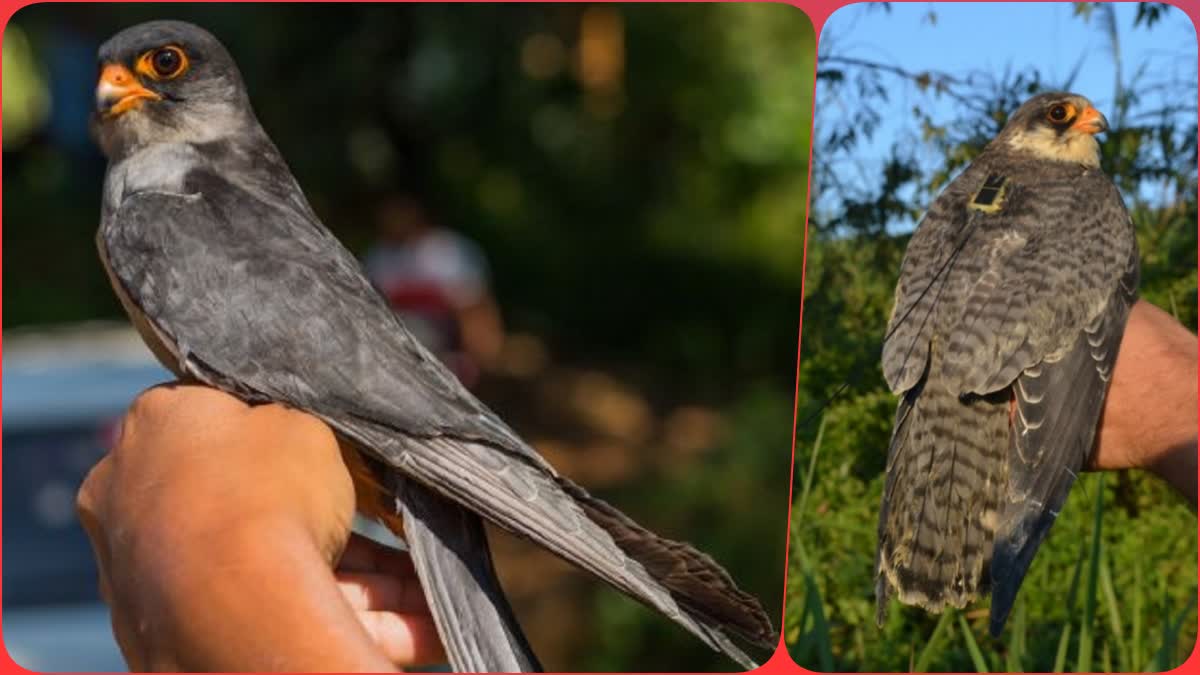Guwahati: India's northeastern states have once again welcomed its annual winged guests—the Amur Falcons. As the arrival of these birds has already begun in their favourite roosting sites in Assam, Manipur, and Nagaland, a team of researchers from the Wildlife Institute of India (WII) at Dehradun has unveiled some interesting facts behind the annual migration to the northeastern states of the country.
The Amur Falcons are the longest-travelling raptors in the world and come to these areas in India's northeast during this time of the year in millions. Until recently, the local tribes used to hunt thousands of them for meat. However, after a vigorous campaign by wildlife activists and some NGOs, not a single bird was hunted in the area in the last few years, and the villagers who used to hunt them for meat have turned their protectors.
Wildlife Institute of India (WII) scientist Dr Suresh Kumar said that the Amur Falcons were small raptors that engage in a transcontinental migration twice a year to get protein-rich food for their survival.
“Their autumn migration takes them from breeding grounds in northern Asia down to southern Africa. To pull off the 3,500 km (2,000 miles) flight over the Arabian Sea, they must first stock up on protein-rich food, and termites are their chosen bonanza,” he said. “One million Amur Falcons (Falco amurensis) can consume two billion termites in just over fifteen days,” he said.
The findings of the research by the WII team are published in a paper titled ‘Prey Species in the Diet of the Amur Falcon (Falco amurensis) During Autumn Passage Stopover in Northeast India’ which was published in the Journal of Raptor Research.
Giving the details about the migration route of the Amur Falcons, Kumar said that these birds take off from Manchurian Steps located north of Beijing in China and fly over southern countries to reach Northeast states. "From their takeoff from Manchurian Steps, they go to Somalia and then to South Africa, where these raptors stay for three months. Now the falcons are on their southbound journey, and they will fly over the Arabian Sea to reach Somalia again, from where they will return to the Manchurian Steps, which is their breeding ground," he said.
Kumar and his fellow researchers, who have been studying the raptors for the last several years, have identified Nagaland in Northeast India as a critical “stopover site” for the Amur Falcons. “As insectivores, Amur falcons are likely dependent on these termites to complete their migration, making this area a potentially critical conservation priority," he said.
“The timing of the emergence of the termites is the reason for which the Amur falcons arrive in the northeast Indian states during this time of the year. It is the time when the rain subsides and termites emerge,” he said.
The research team also observed large numbers of Amur falcons feasting on swarms of termites, offering further evidence that these insects are highly prized by the falcons.
“Termites contain an easily digestible form of protein and high levels of fat, a fact verified by local hunters who call Amur falcons ‘loi’ meaning ‘insect eater.’ Earlier local hunters used to harvest falcons towards the end of their stopover season because their consumption of termites resulted in a rich layer of fat," he said.
The research team of the WII had also radio-tagged some of the birds in the last few years to study their migration route and other details. “We are planning to radio tag two birds this season,” he said.
Read More



